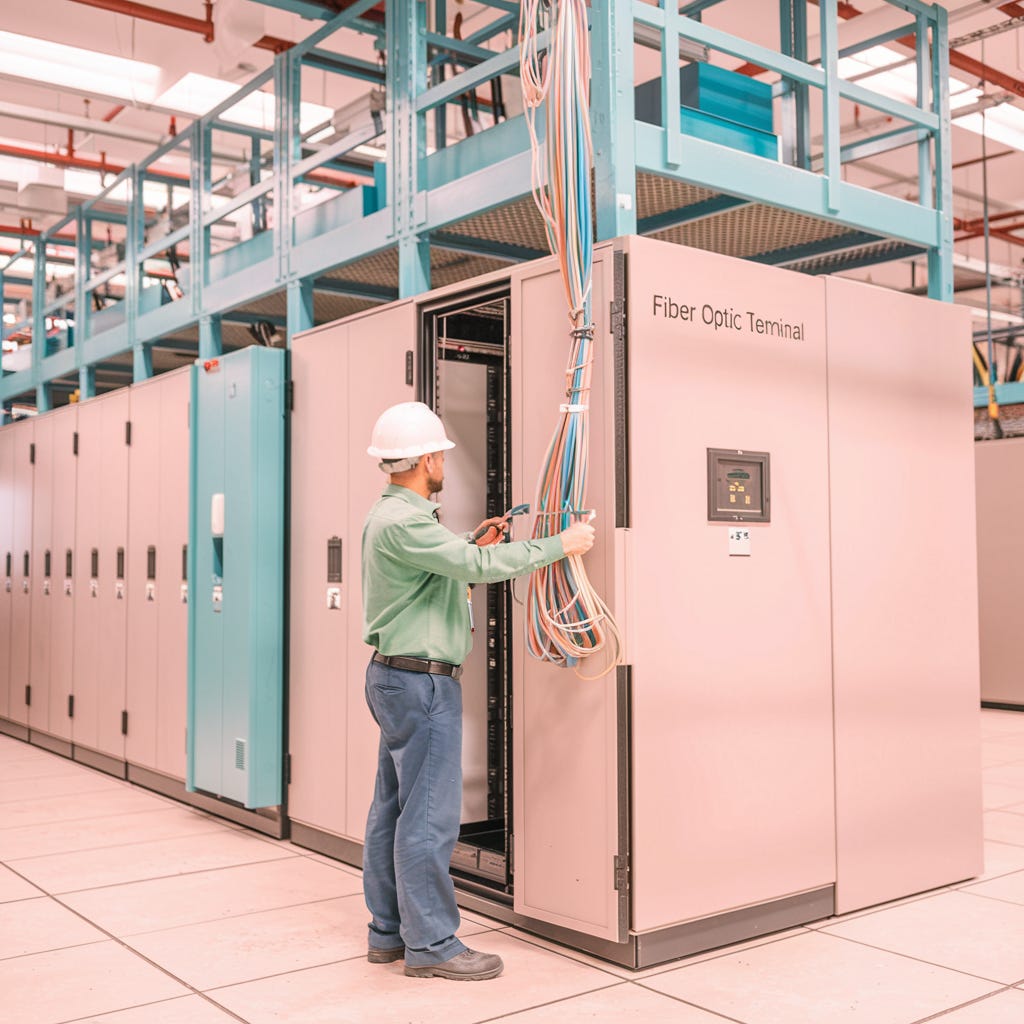Why Fiber-to-Data Center Projects Cost So Much And Still Attract Billions
Why do fiber-to-data center routes reflect high costs and still draw investor capital? This article explains the reasons behind long payback periods and how smart builders are reducing costs.
Welcome to Global Data Center Hub. Join 1700+ investors, operators, and innovators reading to stay ahead of the latest trends in the data center sector in developed and emerging markets globally.
If you’re new to digital infrastructure investing, fiber-to-data center projects can seem overwhelming.
They’re expensive to build.
They take years to pay back.
And yet, they’re one of the most resilient, revenue-generating assets in the connectivity economy.
In this post, we’ll walk through why fiber-to-data center builds are so capital intensive, what drives long payback timelines, and what experienced investors are doing to make the numbers work.
What Is “Fiber-to-Data Center,” Exactly?
Fiber-to-data center (FTDC) refers to the ultra-high-capacity fiber optic lines that connect cloud hubs, hyperscale campuses, and colocation sites to the broader internet backbone. These connections must be:
Low latency
Diverse in route (no single points of failure)
Massively scalable (often 864 to 1,728 strands)
Think of them as the “expressways” of digital infrastructure. Every AI cluster, streaming service, or cloud workload depends on them.
Why These Routes Are So Expensive to Build
Building fiber to a data center isn’t like running fiber to a residential neighborhood. It’s far more specialized and far more expensive.
Here’s what drives up the cost:
1. Premium Routes
Data centers demand low-latency, redundant, and underground routes that often need to run alongside power infrastructure. That means:
Dual duct banks
Deep trenching
Strict permitting
Expensive restoration requirements
According to industry benchmarks, underground FTDC fiber costs $60,000–$120,000 per mile on average.
2. High Strand Counts
Unlike residential fiber (which might use 48 to 96 strands), data center routes use 864, 1,728, or even more strands, enough to serve multiple hyperscalers, carriers, and content providers.
More strands = more cable = higher costs.
But it also creates more future revenue opportunities (dark fiber leases, wavelength services, interconnects, etc.).
3. Civil Works Dominate the Budget
In a typical metro FTDC build, up to 45% of total capex goes toward civil engineering: trenching, boring, traffic control, and surface restoration.
It’s not the fiber that’s expensive. It’s the concrete, asphalt, and time.
Why Payback Periods Are So Long
Even with anchor tenants and high bandwidth demand, FTDC projects often require 7–15 years to reach breakeven.
Let’s unpack that.
1. Time to Build
Permitting and engineering can take 12–24 months, especially in dense urban areas. Then comes construction, which varies depending on the environment (underground vs. aerial).
2. Time to Monetize
Most operators don’t lease all the strands on day one. IRUs (indefeasible rights of use) and leases build slowly, and competition from existing routes can delay ramp-up.
Some long-haul builds serving edge data centers in rural zones report 15+ year simple paybacks, even with anchor tenants.
3. Capex Hits Immediately, Revenue Lags
You spend everything up front. But cash flow might only begin trickling in 12–24 months later.
Without careful planning, this mismatch leads to capital drag and poor investor returns.
So Why Do Investors Still Fund These Projects?
Because fiber-to-data center routes are:
Long-lived (30+ years)
Difficult to replicate (high permitting and trenching hurdles)
Highly monetizable (via dark fiber, lit waves, cross-connects, and IRUs)
In short, they’re sticky, cash-yielding assets, if you structure them right.
What’s Behind the Paywall?
Paid subscribers get access to the next three sections, including:
What Smart Operators Are Doing Differently
What Beginners Should Know Before Their First Fiber Deal
Why Long Payback Can Be a Moat
Upgrade now to unlock actionable tactics, investor frameworks, and the capital structuring playbook behind successful fiber-to-data center projects.
What Smart Operators Are Doing Differently
Top-tier investors are attacking the capital and time challenges on multiple fronts.
Smarter Build Strategies
Microtrenching on paved surfaces reduces construction costs by 30%–80% compared to traditional horizontal boring.
Overlash strategies (hanging new fiber on existing aerial routes) reduce per-foot costs by 50%.
AI route design is helping reduce route miles by up to 25%, optimizing latency and construction costs.
Better Financing Models
Fiber-backed securitization (ABS) is helping lower borrowing costs. Ziply and Frontier issued more than $1.8B in ABS notes at sub-8% rates.
Pre-sale of IRUs before the build provides up-front capital and reduces risk.
Public funding (like BEAD in the U.S.) can offset 25%–75% of the build cost.
Commercial Innovations
Anchor pre-leases lock in revenue before construction even starts.
Multi-service models (dark fiber + lit services + interconnects) increase margin and utilization.
Clustered builds near hyperscale or enterprise campuses increase take rates in year one.
These approaches don't just reduce capital. They change the shape of the revenue curve.
What Beginners Should Know
If you’re just starting to look at fiber-to-data center investments, here are four things to keep in mind:
Capex is front-loaded. But if you control the route, you control the margin for decades.
Payback is long. It’s not uncommon to wait 10+ years before a project turns cash positive.
Execution changes everything. Operators using smart build techniques and financial tools are cutting that timeline in half.
Scarcity creates value. If your route offers unique diversity, low latency, or hard-to-replicate capacity, it becomes irreplaceable.
Final Word: Long Payback Can Be a Moat
Fiber-to-data center infrastructure is expensive. And slow.
But that’s precisely why it’s investable.
Barriers to entry are high. Contracts are long. Returns are stable. The upside goes to those who structure projects right, price risk intelligently, and build with the end customer in mind.
In a world run by AI, cloud, and compute, the fiber that feeds the machines is where the real opportunity lies.

